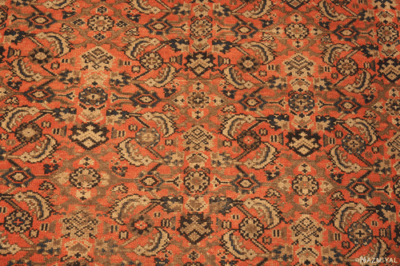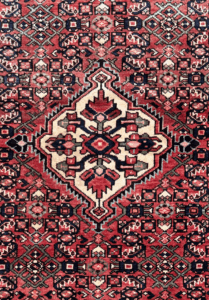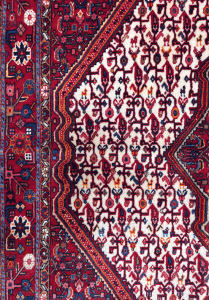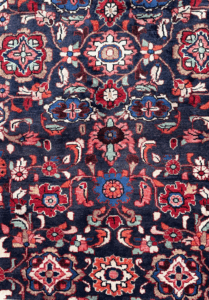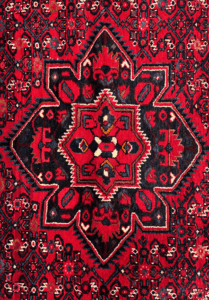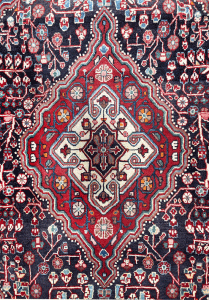Malayer
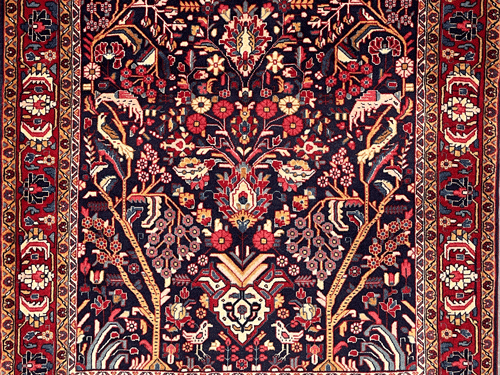
Where is Malayer in Iran?
Malayer, a city in Hamedan province, Iran, has a population of 170,000 and spans 22 square kilometers. With a rich history dating back to the Medes, Achaemenid, Arsacid, and Sasanid empires. this city is home to historical landmarks like Noushijan Hill. Situated between Arak and Kermanshah, the city shares cultural and artistic traits, particularly in carpet weaving with these regions.
How Old is Malayer?
Malayer remained a small village until the Zand dynasty. During the Zand and subsequent Qajar eras, it transformed into a city known for its carpets and agriculture in Iran. The city became a hub for many surrounding villages, developing a rich cultural heritage and earning fame for its unique carpet designs. These carpets are celebrated as some of the finest village-type rugs in Persia, showcasing diverse patterns from local villages.
Design and Patterns
Malayer carpets feature distinctive village-style patterns, with the Mahi motif being the most common. Other notable patterns include Gol Hana, Samovari, and various medallions. These designs are influenced by neighboring regions, blending elements from Hamedan and Sarouk rugs. Patterns range from diamond or hexagon-shaped medallions to all-over designs like the classic Herati, often incorporating geometric and abstract renditions of classical Persian motifs.
Materials and Techniques
Crafted using high-quality wool for the pile, Malayer carpets offer a soft and durable texture. The foundation, typically made from cotton or wool, ensures the rug’s sturdiness. Weavers predominantly use the Persian knot technique, also known as the Senneh knot, which results in a dense and sturdy structure. Most Malayer rugs are single-wefted, with white cotton warps visible on the back. The color palette features deep reds, blues, greens, and warm earth tones derived from natural dyes.
Nature and Agriculture
Malayer’s landscape is a mix of rolling hills, vineyards, and orchards. The city is one of Iran’s top producers of grapes and raisins, contributing significantly to the country’s agricultural exports. The Baba Taher Forest Park and Sarab-e-Gyan are popular natural attractions, offering green spaces and fresh springs for visitors and locals alike.
Collecting and Caring
Antique Malayer rugs are highly sought after by collectors due to their historical value and craftsmanship. These rugs come in various sizes, from small area rugs to larger room-sized carpets, including unique oversized dimensions like 2×5 meters. Their intricate designs, rich color palettes, and high-quality materials make them beautiful decorative pieces for elegant settings. Proper care and maintenance, such as regular cleaning and avoiding direct sunlight, help preserve their beauty and value.
Modern Malayer
Today, Malayer is a developing city that balances its traditional roots with modernization. While agriculture and handicrafts remain central to its economy, the city is also growing in industry and education. Malayer University plays a role in the city’s academic and scientific progress, attracting students from across the region.
Malayer is a city where history, craftsmanship, and natural beauty come together. Whether through its world-renowned carpets, traditional bazaars, or scenic landscapes, the city remains an important cultural and economic center in Iran.
Conclusion
Malayer carpets stand as a testament to the rich cultural heritage and skilled craftsmanship of weavers in this region. Their intricate designs, vibrant colors, and durable materials make them a valuable addition to any home or collection. Whether you are a seasoned collector or a first-time buyer, Malayer carpets offer timeless appeal that can enhance any space.

